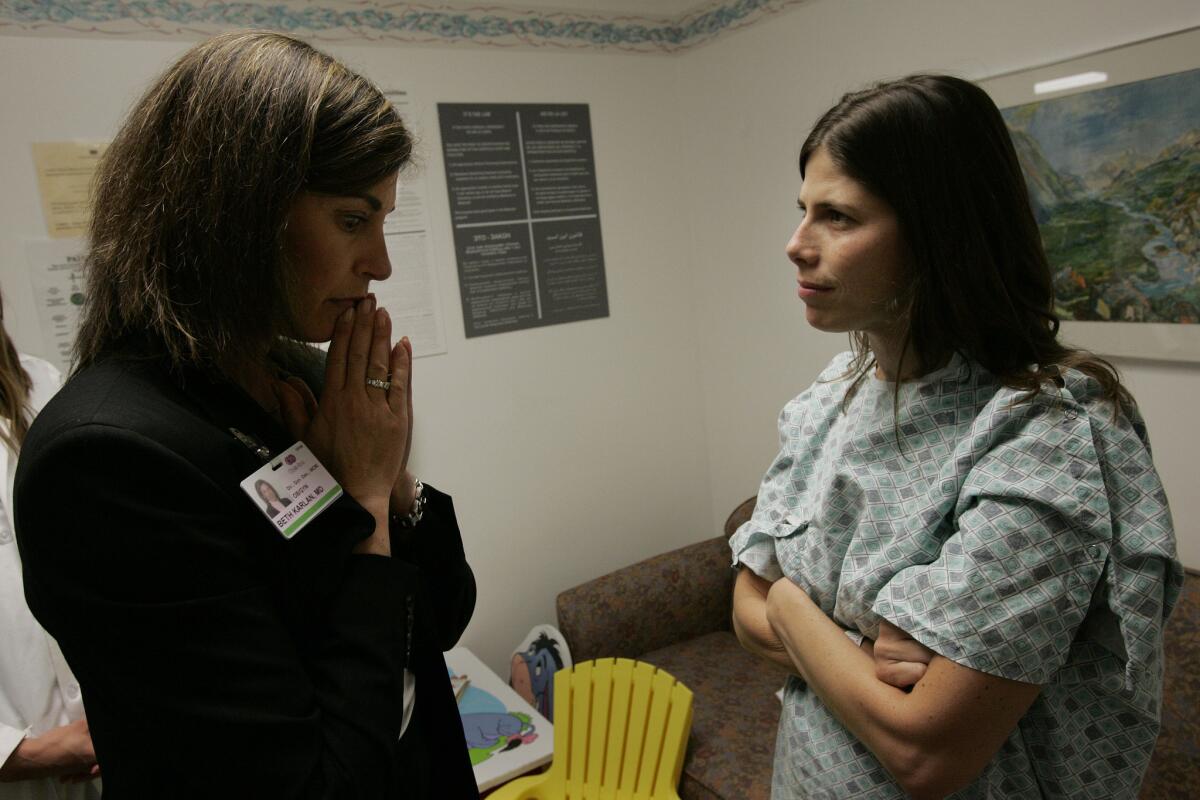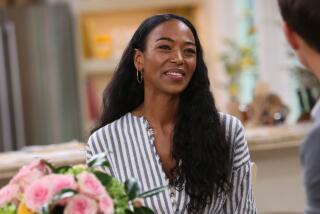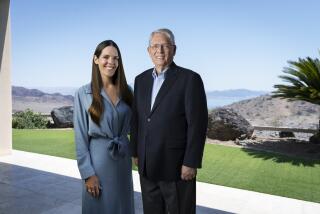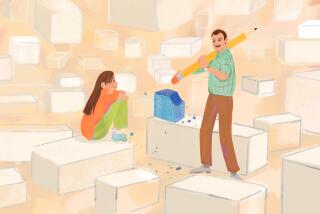A threat of cancer, a drastic decision

My dad did everything he could to look his best that morning. He shaved, brushed his hair and changed into a clean shirt.
I stepped into his room, where he lay on his bed, propped up with pillows. His face was pale and his eyelids heavy; an oxygen tube hung around his neck.
I sat down beside him and handed him my daughter, who was just 4 days old.
This was their first meeting. He looked down at her and softly touched her hair, then looked me in the eye.
“Anna,” he said in a hoarse whisper, “now the race is on for you.”
LIVE CHAT: Anna Gorman will discuss her journey with BRCA1 at noon
My father, Ira Gorman, and I were alike in so many ways. We had the same broad smile, the same freckles across our noses, the same competitive nature. We shared a love of dancing and a love of words.
We also shared a genetic mutation, BRCA1, that dramatically increases the risk of certain types of cancer.
My father had watched cancer kill his mother, aunt and sister. Now, at age 58, it was killing him too.
It was in his pancreas and had metastasized. He was home now, in the final days of 2004, with a morphine drip and hospice nurses. He had just weeks to live.
Still, he was worried for me. Ever since I found out I had the mutation in 2002, he had been pushing me to have my ovaries removed. Since getting sick, he had become more insistent.
The BRCA1 mutation, primarily found among Ashkenazi Jews, raises my risk of ovarian cancer as high as 54% and breast cancer up to 81%. The surgery would cut my chances of ovarian cancer to virtually nothing. And as long as I had the operation by the time I turned 35, it would reduce my risk of breast cancer by half. I was 30.
My father thought I was playing Russian roulette with my life. Now that I had a baby, he believed there was no reason to wait.
I felt terrified for myself as well, as though cancer were this venomous snake waiting to strike. My aunt Lois was just 34, a few years older than I, when she was diagnosed with ovarian cancer. She died at 38.
I wanted to tell my father what he wanted to hear. How could I deny him his last wish for me?
But I wasn’t ready. I wanted another baby, a sibling for my daughter. Over and over, I apologized. I begged him to trust me.
Soon, I told him. Not yet, but soon.
CANCER was on my dad’s side of the family, but my mom was the one following the medical research. In 1996, when genetic testing became available for the BRCA mutation, she urged my sister and me to get checked.
I kept putting it off. But my mom didn’t let up, and in 2002, I decided to go ahead.
Even then, I felt oddly disconnected from what I was doing. My mind was on other things. I had just moved from Ventura to Los Angeles with my boyfriend, Coll Metcalfe, after being hired at The Times.
Two weeks after my blood was drawn, a nurse from Cedars-Sinai Medical Center called me with the results. I was in my car.
“Honey, it’s positive,” she said.
I don’t know what I expected, but it wasn’t that. I started crying and pulled over. I knew it didn’t mean I had cancer, but that’s how it felt. I somehow registered her saying that I could be part of a research program for high-risk women.
I immediately called Coll. We had been dating more than two years and although we hadn’t talked about it much, I thought we would eventually get married. He was on the same path but not as far along. In fact, he had been reluctant to buy a couch together because of the commitment.
He was filming a documentary in Rwanda. After reaching him through his translator’s cellphone, I started to speak, but tears came first.
“I’m scared,” I said, rattling off the risks and describing the recommended timeline for surgery.
I was nervous about how he would react, but I gave him a deadline for putting an engagement ring on my finger -- five months later, by the time I turned 29. I knew it wasn’t fair. I hated pushing him. Even I didn’t feel ready to have children.
He listened and tried to comfort me, telling me everything would be OK and that we would talk more when he got home.
Weeks later, my sister took her test. The results were negative. I was relieved for her, but I couldn’t help feeling envious. She didn’t have to worry about sprinting toward marriage and starting a family.
That fall, I went to Cedars-Sinai for my first mammogram. After changing into a hospital gown and walking into the screening room, I suddenly became dizzy. I had trouble catching my breath. A nurse tried to calm me. I tried to calm myself. Every time I thought I was OK and stood up, I felt faint again. I rescheduled the appointment.
My birthday came and went without a marriage proposal. I felt hurt and angry.
Six weeks later, we traveled to Cambodia and Vietnam on vacation. As we stood at the ruins of Angkor Wat at sunset, all I could think was, “What is he waiting for?”
On the last day, we went out to dinner in Hanoi, both of us in our last clean clothes, exhausted from our travels. It was Valentine’s Day. Coll knelt and held out a ring.
We eloped to Fiji that summer.
Immediately, I wanted to start trying to get pregnant, but Coll persuaded me to wait three months. He wanted to get used to being a husband before becoming a father.
By March of 2004, he was back in Rwanda, finishing his film. While he was away, I took a home pregnancy test. Just to be sure of what I was seeing, I took three more.
“I think I’m ppp ... pregnant!” I e-mailed Coll.
A few weeks later, I was in a hospital gown, waiting to see the doctor for my first prenatal appointment. My sister called my cellphone, crying so hard I could barely understand her.
“Dad has pancreatic cancer,” she told me. “And it has spread to his liver. He isn’t going to live more than a year.”
I remember thinking that couldn’t be right. The doctors had said it was just pancreatitis.
I dialed my dad. The doctors had seen spots on his liver during a CT scan. They scheduled a biopsy. He joked that maybe the spots were drops of coffee spilled by a clumsy radiologist.
But after the biopsy results came back, his humor turned to anger. How could he be dying? He was only 58. He felt cheated.
Until his diagnosis, he had refused genetic testing. There was cancer in his family. He already knew that. What more would a test tell him? Ultimately doctors confirmed that he had the same BRCA1 mutation I did.
After that, my brother, Seth, got tested as well. The results were positive. I was scared for him, concerned that he might get the same cancer they had found in my father.
IN the nine months Dad was sick, I drove to his house in Long Beach at least twice a week.
We watched old movies, went out for pizza, took walks along the water. He asked about the baby. I felt uncomfortable even talking about the birth, fearing he might not be around to see it.
Our conversations often came back to the same point: the surgery. It’s too late for me, he would say. It’s not too late for you.
My dad had his faults. But now, it was hard to remember anything but the good: Him taking me to Lake Arrowhead with my Indian Princesses group, playing hours of Scrabble with me, helping me with school projects. A successful forensic psychologist, my father said more than once that he was most proud in his life of his children.
At the end of my pregnancy, his heart rate spiked. He was hospitalized. My siblings and I visited him in shifts, covering him with blankets and monitoring his pain medication.
While he slept, I read through books of baby names. By Jewish tradition, infants are named in honor of deceased relatives. He had insisted that I give my daughter a name in honor of his father, Morris, who had died years earlier.
One evening, I reluctantly made another list -- of names that began with I, for Ira. When he woke up, I tucked the list away.
While he was in the hospital, his body -- and his mind -- started to fail. The doctors convinced us that chemotherapy wouldn’t prolong his life. We agreed to send him home for hospice care. My due date was a week away.
On the same day my father was released from the hospital, I gave birth to a baby girl. We named her Sadie Manyara, the M for Morris.
Over the next seven weeks -- the last of my father’s and the first of my daughter’s -- I often sat on his bed, with Sadie in my arms. He rested next to us.
While I changed my daughter’s diapers, the nurses changed my father’s. As I breast-fed her, the nurses poured protein shakes into his feeding tube.
At the end, my father lost the ability to speak. The only way either he or Sadie could communicate was by crying.
I held both of their hands. They were both helpless. So was I.
I tried not to cry while at his house. But as I drove home, I couldn’t keep it in. I was devastated about losing my father. And I was haunted by this image of me dying, my daughter sitting beside me.
Maybe my father was right. I was fortunate enough to have this knowledge about my cancer risk, yet I hadn’t acted on it. Maybe I was risking my life. Maybe I should do as he asked.
MY father died on a Saturday morning. He was 59.
Standing before our friends and family at the funeral, I read a story he had written for me when I was little. Sadie was in the front row, sleeping in my husband’s arms.
In the weeks afterward, I became almost paranoid about my health.
As part of the cancer detection program, I had regular blood tests to measure my protein levels. Increased levels can mean ovarian cancer. Mine had never gone above 10. But suddenly they were at 22.
Even though anything under 35 was considered normal by the lab, I became alarmed. I called oncologists around the country. Was it cancer? Could they catch it in time? The experts all echoed what my own doctor had told me, that the results could be skewed by pregnancy.
A few months later, the results dropped to 10.
A second scare came after I weaned Sadie. On a family trip, while putting on a bathing suit, I felt a lump in my right breast. My God, I thought. This is it. My eyes welled up and I could barely breathe. I paged a nurse. She told me it was probably a plugged milk duct; if it was still there in two days, I should call a breast oncologist. The next day, the lump went away.
But the uneasiness lingered. Cancer seemingly was everywhere. I kept hearing about somebody else getting diagnosed or dying.
When Sadie was 6 months old, Coll and I started trying to have another baby. Each month I didn’t get pregnant, I became more anxious. My mom kept asking me how long I was going to wait. My sister even offered to be a surrogate.
Coll wanted me to have the surgery too, but he kept reminding me that I was only 31, four years shy of the doctor’s recommended deadline.
But I didn’t want to wait anymore. I knew how deadly ovarian cancer was, how difficult it was to detect early. I told Coll that if I wasn’t pregnant in five months, that was it. I was having the operation.
My anxiety took a toll on our marriage. Coll wanted another baby of his own. He was adopted; Sadie, who had his curly hair and broad forehead, was the first blood relative he knew. If I had the surgery now, would he forever resent me? What if I waited and got cancer?
In November, I took out yet another pregnancy test from the bathroom cabinet. As I held the stick, my hand shook. Coll looked over my shoulder.
“I think there are two lines,” I told Coll, my heart beating faster. “No, there are definitely two lines.”
“Wow,” he said, as he kissed me.
I gave birth to Twyla in July. We gave her a middle name that started with I -- Isalei.
A few weeks later, I set the date for surgery.
ONE month before the operation, as Coll and I walked into the cancer center for an appointment, I looked around at the other women in the waiting room. It didn’t take much to imagine the worst: Would I be coming here for chemotherapy?
My doctor, Beth Karlan, explained the surgery. While I was under, she and a pathologist would look for signs of cancer before removing my ovaries, uterus and fallopian tubes. Later, they would dissect the organs thinly to make sure there were no abnormal cells. In 10% of women with BRCA mutations who have this surgery, she told me, doctors discover cancer.
“I don’t like that statistic,” Coll said.
I didn’t either. I started worrying that I had waited too long. Now I had my daughters, but would I be there for them?
After that appointment, it also started to sink in that I was about to hit menopause -- at age 32. This surgery would affect my body, and my mind, in ways I might not know for years.
But as the date of the operation got closer, I started worrying more about my daughters than myself. How would I explain to Sadie why I was going away? Would Twyla, who was underweight and still nursing, take a bottle while I was gone?
I went online to check the message board of an organization called FORCE, Facing Our Risk of Cancer Empowered, for women with BRCA mutations. Several Los Angeles women -- cancer survivors, cancer sufferers and people like me, struggling not to get cancer -- were getting together for dinner a few weeks before my surgery.
“I am getting anxious,” I wrote. “I would love to come and meet you all. Is it OK to show up?”
Another new mother welcomed me warmly. She’d had a preventive mastectomy when her sons were 21 months and 5 months -- and a preventive hysterectomy five months later. On the phone a few days later, she explained that both surgeries were for her boys. When she dropped them off at preschool, she said, she wanted to be able to say -- with conviction -- “Mommy always comes back.”
I arrived at the dinner at a Westwood restaurant carrying Twyla, just 2 months old. Across from me sat a 36-year-old, who hadn’t had cancer but had had both her ovaries and her breasts removed to be safe. “They are just body parts,” she told me, pulling out photographs of what was really important to her: her school-age daughters.
I was still getting used to the idea of losing my ovaries. I had always viewed a preventive mastectomy as a drastic measure. It seemed I risked losing nearly everything -- at least physically -- that defined me as a woman. Yet these women seemed not to regret their choices.
Indeed, a few of them went into the bathroom to show one another their reconstructed breasts. They asked me along. Without much ado, each lifted her shirt and explained what kind of surgeries she had undergone. I was surprised at their openness -- and that the breasts looked so normal.
I left the dinner feeling inspired. I realized why I was doing this surgery. I was doing it for my father. I was doing it for myself.
Most of all, I was doing it for my daughters.
THE night before surgery was Halloween, a welcome distraction.
Sadie was a bumblebee. I took her trick-or-treating, then returned to the house filled with nervous energy. I packed my bag, washed dishes and gave my mom instructions on the girls’ napping and eating habits. She and my sister both had come to care for them. Each gave me a card thanking me for my decision.
“It can’t be easy,” my sister wrote, “but we are all glad and relieved you are going through with it. Dad would be too.”
The next morning, Coll and I nervously flipped through magazines in the hospital lobby. I couldn’t concentrate.
Dr. Karlan hugged me in pre-op. “Your dad is with us,” she said, “from above.”
The last thing I remember was the nurse telling me that my husband had called home. Twyla had just finished one bottle and was starting a second. I smiled.
I woke up a few hours later, with Coll by my side. Dr. Karlan walked in. The surgery went perfectly, she said. She would know for sure next week, but she was 99% sure there was no cancer.
“I made it,” I said. “Two babies and no cancer.”
Coll told me that he had waited next to a man whose wife -- only a few years older than I -- was having the same surgery. But she had learned of her mutation only after being diagnosed with breast cancer. She’d already gone through a mastectomy and chemotherapy. They had one child. She got cancer before they were able to have a second.
“This is really awful,” Coll said, holding my hand, “but it could have been a whole lot worse.”
Through the fog of anesthesia, I remember feeling overwhelming relief.
But when the medication wore off, I realized it was far from over. I still had the genetic mutation. And I still had to worry about other cancers, including the one that killed my father.
I wished I could call my dad. Being in the hospital reminded me so much of his illness.
I called home. My sister put Sadie on the phone. “Hi, Mommy,” she said in a sweet, raspy voice. “I love you.”
My eyes filled with tears.
When I got home, Sadie came running to me with a flower from our garden. Twyla waved her arms like a little bird.
My daughters, of course, will not remember that day. I will never forget it.
Days later, I got the call I was waiting for: I didn’t have cancer.
For a few weeks, I mostly stayed in bed. Sadie brushed my hair and brought me Band-Aids for my “boo-boos.” Twyla slept on my chest.
I decided I wasn’t ready for menopause. So I started a low dose of estrogen, through a small, clear patch. The hormone increases my risk of breast cancer, so I don’t plan to stay on it long.
I have started considering a preventive mastectomy, though I still find it a much harder decision than removal of my ovaries.
I would like to say that I have put some of my grief behind me now that I have fulfilled my father’s wish. But it’s not that easy. I miss him terribly. I would give anything to see him playing with Sadie, now just over 2, and Twyla, 8 months.
My greatest fear now is that I have passed this deadly genetic flaw on to them. The odds are 50-50.
When I look at my daughters, I see myself. I see my father. I hope, with everything in me, that they don’t share this part of us.
If they share anything, let it be our broad smiles and our love of words.
*
INFOBOX
BRCA genetic mutations
There are two types of BRCA genetic mutations, numbered 1 and 2, which increase the risks of cancer.
Risks
BRCA genes are found in males and females and generally help prevent cancer by stopping cells from accumulating mutations and growing abnormally. Women with mutated BRCA genes are at greater risk of developing breast and ovarian cancer. For them, the estimated lifetime risk of developing breast cancer is 85%, compared with 12% for women without a mutation. Their estimated risk of ovarian cancer is 23% to 54%, compared with 1.5%.
Links
Research has shown a link between the mutations and cancers of the fallopian tubes, pancreas and prostate, and melanoma and male breast cancer.
Family history
Genetic counseling and testing are recommended for those with a strong family history of breast or ovarian cancer. Women with the mutations should be screened regularly through blood tests, mammograms, ultrasound and magnetic resonance imaging. Many oncologists recommend that women with the mutations consider having their ovaries, fallopian tubes and breasts removed prophylactically to reduce risk.
More information
Contact the National Society of Genetic Counselors at www.nsgc.org.
--
Source: American Cancer Society, Cedars-Sinai Medical Center






